Amphisarca Lists
-
Commercial treatment technology of postharvest navel orange fruit
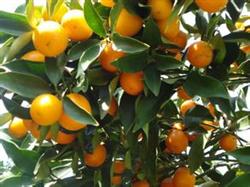
1. Growth and development index of high yield of navel orange 1. Tree shape, plant height and crown width. The 4-5-year-old tree is naturally round-headed, the trunk height of the adult tree is controlled at 40 cm, the tree height is controlled at about 2.5 m, and the crown width for high yield should be kept at about 2.80 m x 2.60 m. 2. Diameter and classification. The stem diameter of Newhall branch should be rough.
2018-09-12 -
High-yield cultivation techniques of navel orange
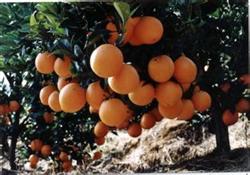
1. Selection of dwarfing rootstock and grafting of dwarfing varieties are beneficial to early fruiting. Generally, large leaf and small flower lines of Fructus Aurantii are selected as dwarf rootstocks. Fructus Aurantii is the rootstock with dwarfing effect in citrus at present. It has four strains, among which the dwarfing effect of large-leaf and small-flower strain is more ideal. Second, curved roots shallow planting, control the main...
2018-09-12 -
Nutritional requirements and fertilization of Sugarcane
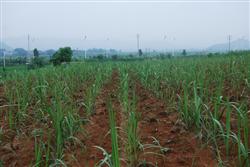
First, the use of phosphate fertilizer must be fully crushed and fully mixed with garbage fertilizer or farm soil fertilizer before composting. In recent years, many sugarcane farmers directly spread phosphate fertilizer in the ditches, so that the utilization rate of phosphate fertilizer is less than 10% and more than 90% is wasted by soil fixation into ineffective phosphorus. The author suggests: using phosphate fertilizer 30 per mu.
2018-09-12 -
Management of sugarcane in spring
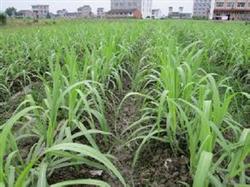
The phosphate fertilizer fully crushed with phosphate fertilizer, garbage fertilizer and farm manure are fully mixed and composted before application. In recent years, many sugarcane farmers directly spread phosphate fertilizer in the ditches, so that the utilization rate of phosphate fertilizer is less than 10% and more than 90% is fixed by the soil as ineffective phosphate fertilizer wasted. Suggestion: fully crush with 30,50kg phosphate fertilizer per mu.
2018-09-12 -
Harm and control methods of sugarcane termites
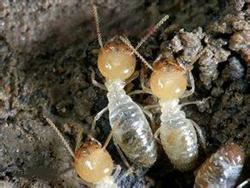
Sugarcane termites are mainly black-winged termites and yellow-winged termites. Sugarcane will be harmed by termites in the whole growing period, especially in the germination stage after sowing, and the harmful sugarcane species often invade through the incisions at both ends and eat the tissue in the stem, so that the seedlings can not germinate. In the middle and later stage, it was eaten by the underground sugarcane, making the stem hollow, the leaves withered yellow or dry shoots, and the whole plant withered.
2018-09-12 -
How to cultivate water-saving sugarcane in winter and spring
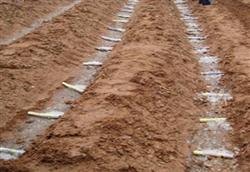
Paddy sugarcane is one of the important types of sugarcane cultivation in Yunnan. Many sugarcane cultivation areas in our province have serious soil erosion, irrigation and water conservancy facilities construction lags behind, coupled with drought in winter and spring and lack of water in paddy fields. Except that some fields can plant sugarcane according to the festival requirements, most of the paddy fields are planted late, from the end of April to the end of April.
2018-09-12 -
Interplanting technique of Spring Peanut and Sugarcane
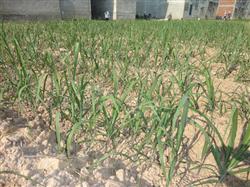
Sugarcane is native to tropical and subtropical areas and was previously planted only in the south of the Yangtze River. In recent years, through the unremitting efforts of scientific and technological workers, the planting area of sugarcane in the Huang-Huai River Basin has expanded year by year. In the process of planting, the stem of sugarcane can not be used to raise buds at high temperature. if the stem is used to raise buds, sugarcane will not be cultivated successfully. Yes.
2018-09-12 -
How to prevent and cure the three major diseases of navel orange
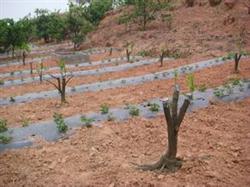
The fruit characters of navel orange grafted on adult mandarin trees were normal in the first two years, and then the bad characters of variety degradation appeared year by year: shorter shoots, smaller leaf shape, lighter leaf color and weaker tree potential. Fruit rate decreased, fruit shape became smaller, pericarp dim and dull, flavor became lighter and fruit quality decreased. In production practice.
2018-09-12 -
Matters needing attention in planting green jujube

Matters needing attention in planting green jujube
2018-09-12 -
Control measures of sugarcane heart borer
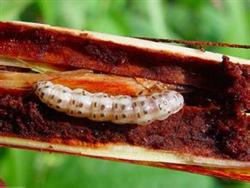
Sugarcane heart borer is mainly sugarcane Chilo suppressalis and Chilo suppressalis. These two kinds of borers have 3-4 generations a year, the first generation generally occurs from the first and middle of May to the first and middle of June, and the second-third generation occurs from late June to September. Sugarcane will be damaged by these two kinds of borer from seedling stage to pre-harvest, among which the occurrence of the first-second generation is more harmful.
2018-09-12 -
Sugarcane has a new way to control pests.
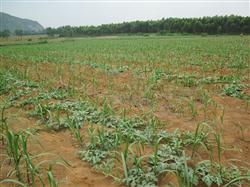
First, reasonable selection of land plots and improved varieties of sugarcane and melon. That is, it is appropriate to choose the fertile land cover with deep soil layer and good drainage performance. The varieties with medium maturity, high yield, high sugar and high stem formation rate were selected for sugarcane, and the varieties with early maturity, good quality and high fruit setting rate of head flower were selected for watermelon. Second, timely seedling raising and transplanting. Sugarcane should be in early March.
2018-09-12 -
Sugarcane flood-upland rotation model
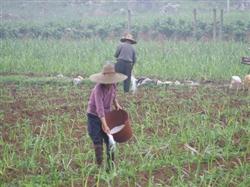
First, the characteristics of sugarcane fertilizer requirement. As far as a large number of elements are concerned, the fertilizer requirement of sugarcane is that the absorption of potassium is greater than that of nitrogen, and that of nitrogen is greater than that of phosphorus. Among them, nitrogen fertilizer should be applied less in the early stage, re-applied in the growing period, and applied appropriately in the later stage. Due to the concentration of phosphate fertilizer in the early growth stage of sugarcane, it has a great influence on the growth of hairy root and seedling, so it is suitable to be used as base fertilizer.
2018-09-12 -
Scientific fertilization Technology for planting Sugarcane
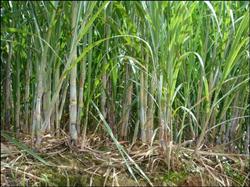
The average elongation of sugarcane is more than 3 cm per ten days from the beginning of jointing and the average elongation of sugarcane is more than 3 cm per ten days. It is also the golden season of sugarcane jointing, and good field management is the key to a bumper harvest. Therefore, we must pay attention to the following measures: first, re-application of stem fertilizer sugarcane extension is to expand the root, open big.
2018-09-12 -
Cultivation techniques of Fruit Sugarcane
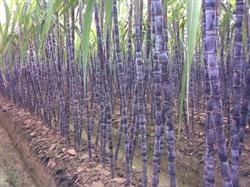
1. Variety selection at present, there are two kinds of fruit sugarcane planted in Yuanjiang County: crisp red sugarcane and magenta sugarcane. According to the results of the comparison test conducted in Daming Um in 2000, crisp red sugarcane is obviously better than magenta sugarcane in stem diameter, stem weight, Internode length, silty quality and stomachability, or in unit yield and commodity rate.
2018-09-12 -
How to cultivate sugarcane seedlings?
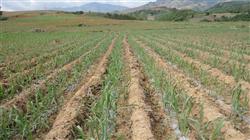
1 cultivation technique of plastic film mulching of newly planted sugarcane 1.1 Fine soil preparation with cattle plough or tractor ploughing 25mur30cm to achieve two ploughs and two rakes. Then press the row spacing of 90ml / 100cm to plough or artificially plant the sugarcane ditch with a depth of 23mm / 25cm. At the same time, in order to prevent rain and stagnant water in the future, drains and ditches should be opened around the sugarcane fields.
2018-09-12 -
Integrated control measures of Hami melon vine blight in rainy area
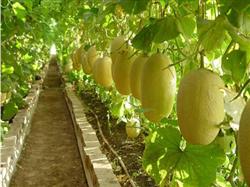
First, bacterial leaf spot symptoms: in the early stage, waterlogged disease spots appeared near the veins of the dorsal leaves, which expanded rapidly and became one, with yellow halos on the edges. Prevention and treatment: at the initial stage of the disease, 77% Dorin 500 times or 3% Zhongshengmycin 800 times foliar spray 2-3 times, once every 4-5 days. Second, vine blight disease.
2018-09-12 -
Rational cultivation of dragon fruit to achieve high yield
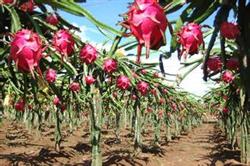
1. Choose a place. The dragon fruit is resistant to drought and humidity, and is afraid of low temperature. It can be planted in areas with an annual average temperature of more than 20 ℃. The slopes with good drainage, fertile and loose soil layer, good aggregate structure but not sandy loam, sandy loam and clay loam should be selected for planting. The soil moisture should not be too high and the air permeability should be good, otherwise it will be perishable.
2018-09-12 -
Irrigation and drainage of dragon fruit (part two)
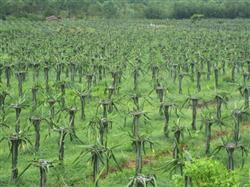
(2) Irrigation method and irrigation quantity ① flooding irrigation is often carried out in the area with abundant water sources and flat terrain. However, this method has a certain degree of damage to the soil structure, labor-consuming and time-consuming, and uneconomical, so it has been gradually reduced. ② border irrigation by plant as a unit to repair the tree plate, or along the tree line to make a long border, irrigation.
2018-09-12 -
Irrigation and drainage of dragon fruit (part I)
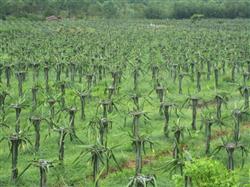
Soil water status is closely related to tree development, high yield, stable yield and tree life. It is an important task of orchard soil management to keep soil moisture condition in a range conducive to the growth and development of fruit trees through irrigation and drainage. 1. Irrigation is the lifeblood of plant growth and the essential activity of all organs.
2018-09-12 -
Fusarium oxysporum fruit rot of Hami melon
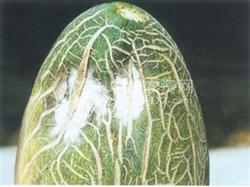
Fusarium fruit rot of Hami melon, also known as white mildew, is an important disease on Hami melon, which mostly occurs during storage and transportation, and Hami melon and Bailan melon are vulnerable. The symptoms are mainly harmful to the fruit. At the beginning of the fruit stalk produced a round slightly sunken light brown spot, the size of 10-30mm, waterlogged around the back, some slightly cracked, on the crack.
2018-09-12
